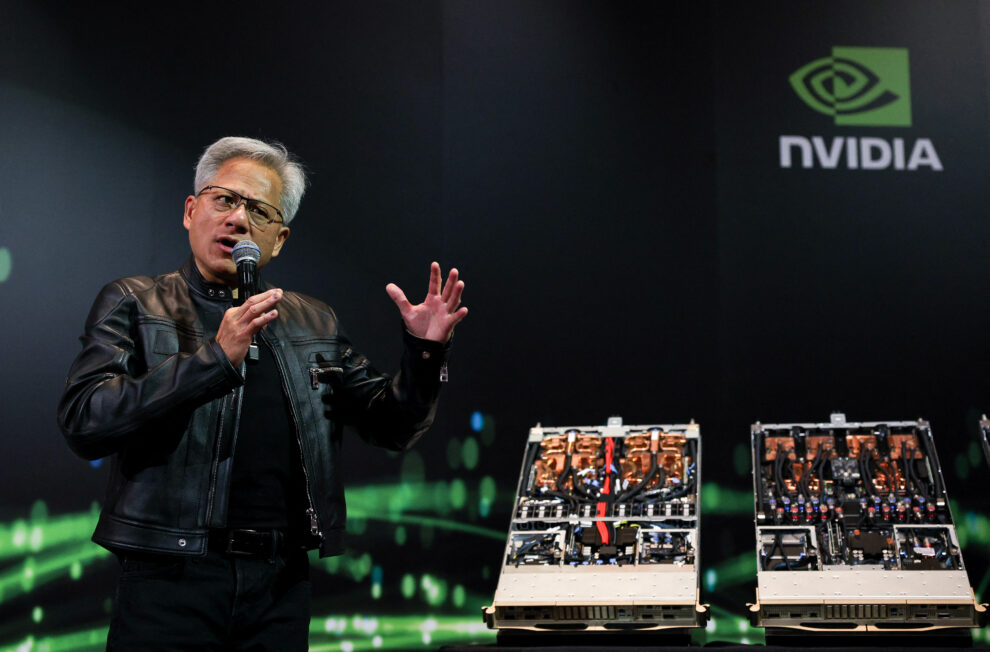Nvidia Eyes Chinese Market with New AI Chip Launch
Nvidia, a name synonymous with graphic processing units (GPUs), has been making waves in the artificial intelligence (AI) sector. The introduction of its latest AI chip, which promises to revolutionize AI computation, is particularly noteworthy given the growing demand for AI technologies worldwide, especially in China. With an enormous market for AI applications, Nvidia’s strategic focus on China could reshape the company’s future and alter the landscape of the sector itself.
1. Understanding Nvidia’s AI Chips
Nvidia’s AI chips have garnered attention for their superior processing power, which is crucial for training AI models and managing large data sets. The company has long been recognized for its GPU technology, primarily catering to gaming and graphical applications. However, with the advent of AI and deep learning technologies, Nvidia has successfully transitioned into a leader in the AI hardware space.
1.1 Architecture and Performance
The latest Nvidia AI chip utilizes an advanced architecture that enhances performance while optimizing power consumption. Key features include:
- Tensor Cores: These cores accelerate AI workloads, offering substantial improvements in training time for neural networks.
- Multi-instance GPU (MIG) technology: This enables a single GPU to be partitioned into several smaller, independent GPUs, making it easier for data centers to manage workloads efficiently.
- NVLink and NVSwitch: These interconnects provide significant bandwidth, facilitating faster data transfers between GPUs and improving overall system performance.
1.2 Applications
Nvidia’s AI chips find applications across various sectors, such as:
- Healthcare: Accelerating drug discovery and diagnosis through deep learning algorithms.
- Finance: Enhancing trading predictions and risk management through AI models.
- Autonomous Vehicles: Supporting real-time data processing for navigation and safety.
2. The Growing Demand for AI in China
China stands at the forefront of the global AI race, driven by heavy investments from both the government and private sectors. Recent reports estimate that the Chinese AI market could surpass $150 billion by 2030, making it a lucrative opportunity for companies like Nvidia.
2.1 Government Support
The Chinese government’s commitment to AI development is evident in its national strategy. Initiatives such as the "New Generation AI Development Plan" aim to turn China into a global leader in AI by 2030. This environment fosters innovation and attracts significant investments in AI technologies, providing a fertile ground for Nvidia’s new AI chip.
2.2 Private Sector Growth
The private sector in China has also shown remarkable growth in AI applications. Companies like Baidu, Alibaba, and Tencent are all heavily investing in AI research, creating vast opportunities for Nvidia’s chips to play a central role in their innovation efforts.
3. Strategic Partnership and Collaboration
In order to leverage the expanding Chinese market, Nvidia is likely to pursue strategic partnerships with local companies. Collaborations with tech giants in China will not only enhance Nvidia’s credibility but also facilitate the integration of Nvidia’s chips into existing infrastructure and workflows.
3.1 Joint Ventures
Establishing joint ventures can provide Nvidia with the local expertise and market knowledge necessary to navigate China’s unique business landscape. These collaborations could involve co-developing AI applications tailored for specific industries, ensuring that Nvidia’s offerings are optimally aligned with market needs.
3.2 Academic Collaborations
Collaboration with Chinese academic institutions is another avenue for Nvidia to foster innovation. By investing in research partnerships and talent development, Nvidia can position itself as a thought leader in the field while nurturing the next generation of AI engineers and researchers.
4. Challenges in the Chinese Market
Despite the vast opportunities, Nvidia’s entry into the Chinese market is not without its challenges.
4.1 Regulatory Environment
China’s regulatory landscape for technology companies is complex and often subject to sudden changes. The government maintains strict controls over data use and privacy, which means Nvidia must ensure compliance with local laws and regulations. This requires adapting to the Chinese government’s expectations regarding data management and user privacy, which may differ significantly from those in Western markets.
4.2 Competition
Nvidia faces fierce competition from domestic players like Huawei and Alibaba Cloud, which have been investing heavily in their own AI hardware. These competitors often have the advantage of local knowledge and customer relationships, making it crucial for Nvidia to differentiate itself through its technology and service offerings.
5. Marketing Strategies for the Chinese Market
To effectively market its new AI chip in China, Nvidia must adopt a targeted approach that resonates with local consumers and businesses.
5.1 Customization
Customization is essential in appealing to the local market. Tailoring products to meet specific industry needs can give Nvidia a competitive edge. This might involve developing specialized versions of their AI chip for sectors like agriculture, smart cities, and healthcare.
5.2 Brand Awareness
Building brand awareness is crucial for establishing Nvidia as a trusted name in China’s AI ecosystem. Engaging in local events, conferences, and trade shows can enhance visibility. Furthermore, leveraging social media platforms, which are uniquely tailored to the Chinese market, will also be central to the outreach strategy.
5.3 Use Cases
Demonstrating successful use cases can significantly influence purchasing decisions. Nvidia should collaborate with local companies to showcase how its AI chips are enabling innovative solutions. Case studies highlighting improvements in efficiency, cost reductions, and revenue growth can serve as compelling evidence of the chip’s value.
6. Global Implications
Nvidia’s foray into China has broader implications for the global AI landscape. As Nvidia solidifies its position in the Chinese market, its influence will likely extend to other regions, given China’s prominence in AI adoption.
6.1 Setting Standards
If Nvidia succeeds in China, it could set new standards for AI hardware globally. The technology developed in response to the specific needs of the Chinese market could have cascading effects on global AI trends.
6.2 Competition with Other Global Players
Nvidia’s advancements in the Chinese market can intensify competition with other global tech giants, such as Intel and AMD, as these companies may be compelled to enhance their own offerings to keep up.
7. Conclusion
Nvidia’s launch of its new AI chip signifies an ambitious strategy to tap into the burgeoning AI market in China. With the right approach—emphasizing strategic partnerships, local customization, and compliance with regulatory frameworks—Nvidia is positioned to make a significant impact on the Chinese AI landscape. The implications extend beyond mere market entry; Nvidia’s decisions can shape the future of AI globally. As a result, it is not just a business venture but an essential aspect of the larger conversation about technology, competition, and collaboration in the age of AI.
Footnotes:
-
Nvidia’s portfolio includes a range of advanced technologies designed to enhance AI capabilities, including its cutting-edge GPUs and next-generation AI chips that are specifically aimed at improving computational efficiency and performance in various applications.
-
The Chinese government’s initiatives and investments in the AI sector have created a fertile ground for innovation, positioning the nation as a key player in the global AI landscape.
-
China’s private sector has also made significant strides in AI, establishing a robust competitive environment for foreign companies vying for market share.
-
Collaborative efforts between Nvidia and local Chinese corporations and academic institutions can pave the way for groundbreaking innovations that address specific industry needs.
-
Falling short on regulatory compliance could pose risks for Nvidia as it navigates the complexities of the Chinese market, necessitating a strategic approach that ensures adherence to local laws and regulations.
-
Demonstrating practical applications and successful case studies will be pivotal in enhancing brand trust and awareness among potential Chinese customers.
- Global AI standards are likely to evolve in response to developments in major markets, with Nvidia’s success in China potentially influencing broader trends worldwide.
This strategic focus on the Chinese market could very well serve as a blueprint for succeeding in highly competitive environments characterized by rapid technological advancements.
Click here and see the Source


























Add Comment